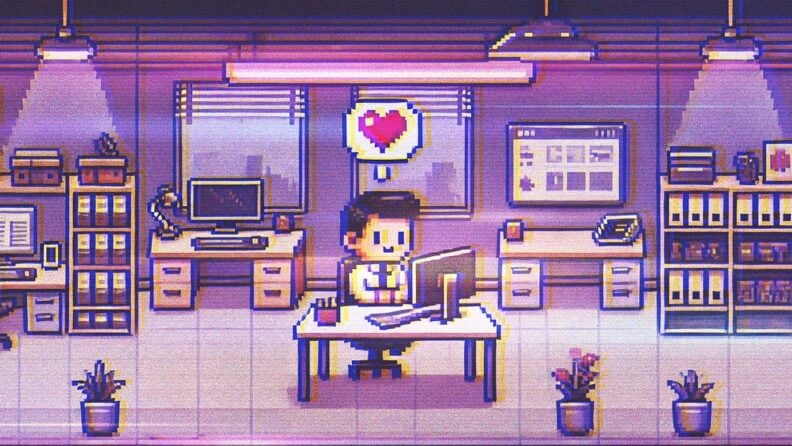Climbing the corporate ladder at this point feels a lot like courtship in the modern dating scene. The journey is fraught with highs, lows, and the occasional ghosting (usually by a recruiter).
The stakes are high and the path is often unpredictable. Whereas finding the perfect partner requires a blend of chemistry, timing, and mutual understanding, in the same vein, ascending to the role of CTO involves its own set of nuanced interactions and strategic alignments. Either path you're on necessitates learning, growth, and a touch of serendipity.
You’ll need a polished profile—LinkedIn or Tinder, take your pick—and the stamina to swipe past the 'Not Quite Rights' to find the 'The One.'
Let’s dive into the uncanny parallels and, more importantly, the actionable takeaways, between finding love and landing that coveted corner office.
1. The Awkward First Dates (Junior Developer Years):
Much like those initial coffee meets where you overanalyze everything from your handshake to how you order your latte, the junior developer years are about making first impressions that count. You're eager to demonstrate your coding skills, just as you're keen to show your well-rounded personality to your potential match.
Beware of over-committing to a project or a person. Both can lead to late nights wondering why you didn’t see the red flags – like the absence of version control or your potential partner's disdain for your favorite sci-fi series.
The early days as a junior developer – similar to those awkward first dates where you’re full of enthusiasm with a tinge of nervousness – lay the foundational bricks on the path to becoming a CTO. Each new project is a mix of anticipation and uncertainty. Every line of code written and every problem solved is a step toward understanding the intricacies of technology. These years are marked by learning from mistakes, celebrating small victories, and forming relationships, both with code and colleagues.
In this delicate balance of growth and challenge, the junior developer begins to realize that the journey to becoming a CTO is not just about technical prowess but also about building enduring connections and learning the art of resilience - skills as crucial in the boardroom as they are with matters of the heart.
2. The "It's Complicated" Relationship (Mid-Level Developer):
Stepping into the role of a mid-level developer is like entering the dramatic and unpredictable world of a reality TV dating show. Alliances shift, strategies evolve, and every day brings a new challenge. You’ve been around the block, and you’re starting to understand what you want.
In this phase, your decisions have a greater impact, mirroring the deeper connections and more significant choices in a developing relationship.
You juggle multiple programming languages like spinning plates, and you’ve learned to avoid the dreaded "undefined" relationship status. Here, a future CTO learns the critical skills of adaptability, strategic thinking, and emotional intelligence.
The risks are real, and the challenges are multifaceted, but so are the opportunities to shine and stand out. In this 'game,' every decision counts, every alliance matters, and every successful project is a step closer to the coveted role of CTO.
But then, you encounter the legacy system—or partner—who’s set in their ways, resistant to change, and full of unexpected issues that test your patience and debugging skills. In these moments, the budding CTO learns the importance of innovation, teamwork, and managing expectations - all while keeping the end goal in sight.
This would be when you’d change your relationship status on Facebook to “It’s complicated.” It's kind of like the millennial version of a reality TV confessional.
3. Meeting the Parents (Lead Developer/Manager):
Now, things are getting serious. You’re stepping up to a lead developer or manager position. In your dating life, this equates to the stage where you’ve finally been invited to meet the parents. Either way, you're gaining access to the inner circle. First impressions and ongoing interactions can set the tone for future trust and acceptance.
You’re expected to take responsibility not just for your output but for your team’s performance. Emotional intelligence plays a pivotal role in this stage. It is the underpinning force that facilitates navigating the complexities of leadership and personal relationships. When meeting your partner's parents, your ability to read and respond to emotional cues becomes crucial.
In the workplace, emotional intelligence equips you to handle challenging situations gracefully—addressing project setbacks, managing team dynamics, or dealing with the intricacies of legacy systems. Emotional intelligence fosters the maturity, reliability, and foresight needed to maintain harmony and guide growth.
If things go south, you can't just "ghost.” You must face the music, attend the awkward retrospectives, and navigate through the messy breakups with legacy systems that everyone but you seems to love.
This stage is crucial – demonstrating that you have the maturity, reliability, and foresight to maintain harmony and steer growth, not just for a project but for the entire team. You're no longer just an individual contributor; you're an integral part of a larger family, entrusted with more significant responsibilities and expectations.
This is where your technical skills, much like your charm and wit at the dinner table, need to be accompanied by a deep understanding of the broader picture. You're now in a position where your actions and decisions can significantly impact the well-being and direction of your team and projects.
This is not the time to share that anecdote about how you won every drinking contest in your fraternity days. Some wins aren’t really wins.
This stage prepares you for the ultimate commitment in your professional journey – becoming a CTO. Do you have what it takes to be a guiding force that shapes your organization’s future?
4. The Long-Term Relationship (Director of Technology):
You’ve found a rhythm with your partner, and you're in it for the long haul. As a director, you’ve committed. You’re not just coding; you’re planning roadmaps, predicting trends, and managing crises.
It’s about stability and growth, like moving in together and figuring out how to merge your IKEA furniture with their antique collection. You start attending more meetings than stand-ups, and your vocabulary shifts from "refactoring" to "synergy."
For some organizations, especially startups or smaller companies, bringing on a fractional CTO—a part-time technology leader—offers the stability and strategic guidance needed at this stage without the full-time commitment. Fractional CTOs can help steer a company's tech vision and align teams, providing a level of expertise that might otherwise be out of reach.
The early days of dating, filled with spontaneous coffee dates and late-night chats about dreams and hobbies, have transformed into planning the future and discussing 'where this is going.'
In your career, you begin to focus more on how different departments can work together effectively and how your actions impact the larger organization. It's a transition from the excitement of early romance to the stability and depth of a long-term partnership.
5. The Proposal (Becoming the CTO):
Finally, the big moment. You’ve been eyeing that CTO role like a diamond ring in the shop window. When the offer comes, it feels like a grand gesture, replete with champagne and congratulations. But once the excitement settles, you realize it’s not just a title; shit's about to get real.
You now promise to steer the company through thick and thin. You’ll need to blend the wisdom of a seasoned developer with the foresight of a clairvoyant partner who remembers anniversaries and knows exactly when to invest in Bitcoin or a bouquet.
As a CTO, you're not just part of a team; you're in a relationship with every aspect of the company. And like any good relationship, it’s about communication, understanding, growth, and the occasional romantic getaway to a tech conference in Vegas.
Whether you’re navigating the murky waters of the dating pool or the corporate ladder, the goal is remarkably similar: to forge a connection that’s enduring, fulfilling, and, with a bit of luck, revolutionary.
For more insights from CTOs (and less dating advice), subscribe to our newsletter and get the latest articles delivered to your inbox.








